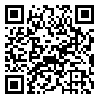Sat, Apr 27, 2024
| فارسی
Volume 20, Issue 2 (Summer 2018)
Advances in Cognitive Sciences 2018, 20(2): 93-105 |
Back to browse issues page
Download citation:
BibTeX | RIS | EndNote | Medlars | ProCite | Reference Manager | RefWorks
Send citation to:



BibTeX | RIS | EndNote | Medlars | ProCite | Reference Manager | RefWorks
Send citation to:
Fazilat-Pour M. Category Norms for the Verbal Items of Farsi Language in 51 Categories: A Replication and Extension of the Connecticut Norms. Advances in Cognitive Sciences 2018; 20 (2) :93-105
URL: http://icssjournal.ir/article-1-736-en.html
URL: http://icssjournal.ir/article-1-736-en.html
Assistant Professor of Cognitive Psychology, Department of Psychology, Shahid Bahonar University of Kerman, Kerman, Iran
Abstract: (2439 Views)
Introduction: According to Tulving, semantic memory is one of the sub-types of memory which is the ability to recollect concepts and semantic words. The hierarchy of the generated exemplars of the given concepts is one of the typical measures for this type of memory. Except for the Farsi language, there are mass studies in preparation of the conceptual categories; therefore the present study is aimed to prepare category norms for the Iranian students. Method: The method of study was descriptive. The target population includes all of the current students at the universities of Iran. The studied sample consisted of 200 students, recruited from the universities from five geographical zones by convenience sampling. For data collection, the original method of Battig and Montague (1969) is employed where the conceptual stimuli are presented in 30-second intervals. Results: After eliminating the incomplete responses, the valid generated exemplars of 165 participants for 51 concepts as extracted from the original Battig and Montague study, are analyzed. The measures of potency, rank, and the total number of generated exemplars are extracted for each of the exemplars. In addition, the percentages’ measures of the total number for each of the exemplars and the percentage of the generated exemplars as the first response are extracted. Concussion: The extracted category norms can be used as a valuable tool for the studies of semantic memory in different scientific areas.
Type of Study: Research |
Subject:
Special
Received: 2017/02/28 | Accepted: 2017/11/30 | Published: 2018/09/11
Received: 2017/02/28 | Accepted: 2017/11/30 | Published: 2018/09/11
Send email to the article author
| Rights and permissions | |
 |
This work is licensed under a Creative Commons Attribution-NonCommercial 4.0 International License. |



